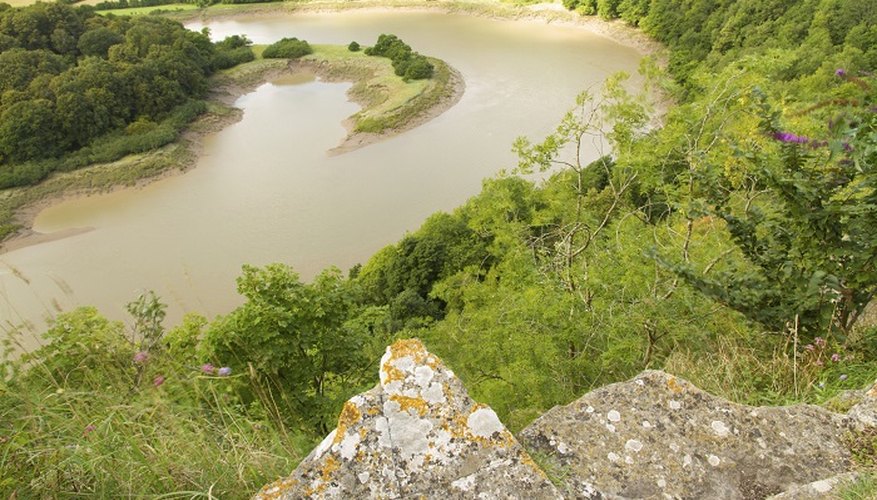Rivers are a crucial part of geography education and carry with them a wealth of facts and information, from the source to the mouth. Children can start to build a thorough understanding of these bodies of water by learning names for all the parts of a river and how they were formed.
Source
A river starts with its source. The source can be surface water, caused by rain or melting snow and ice, or an underground spring; this source is also known as the "headwaters." As this water builds up, it forms a puddle, then a trickle, then a very small river known as a stream or rivulet -- this can be as small as 1 cm across. Streams from various sources join together to form a larger river.
- A river starts with its source.
- As this water builds up, it forms a puddle, then a trickle, then a very small river known as a stream or rivulet -- this can be as small as 1 cm across.
Tributary
"Tributary" is the name given to a small river that flows into a bigger one. There may be many tributaries contributing to a larger river; the Thames has scores of tributaries. The point where a tributary joins the larger river is called a "confluence" or "fork." The opposite of a tributary is a "distributary," which is a stream that runs out of the main river instead of into it.
- "Tributary" is the name given to a small river that flows into a bigger one.
- The opposite of a tributary is a "distributary," which is a stream that runs out of the main river instead of into it.
Meander
Rivers usually flow in a curving path, and these curves are called "meanders." The meanders are caused as the flowing water cuts or erodes through softer soil over a long period of time. The water flows faster on the outer edge of the meander as the erosion continues, and slower on the inside edge where the eroded material is deposited. The river changes shape over time as meanders are being created. Sometimes a u-shaped meander is abandoned by the river as it takes a different route. This area becomes separated from the main river and is known as an oxbow lake.
- Rivers usually flow in a curving path, and these curves are called "meanders."
- The meanders are caused as the flowing water cuts or erodes through softer soil over a long period of time.
Mouth
The river's mouth is where it ends and joins a sea or ocean; this is often the river's widest point. The river drops a lot of the sediment it has been carrying at this point. The mouth of the Thames separates the counties of Essex and Kent. When a river flows into the sea, the freshwater meets saltwater, and this area is known as the "estuary." The mixture of saltwater and freshwater is called brackish water.
- The river's mouth is where it ends and joins a sea or ocean; this is often the river's widest point.
- When a river flows into the sea, the freshwater meets saltwater, and this area is known as the "estuary."
